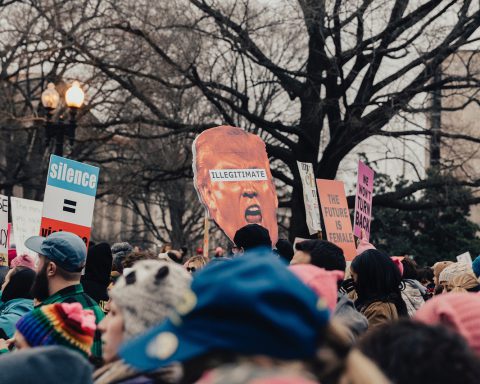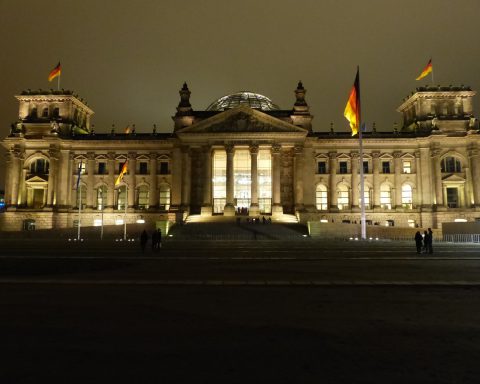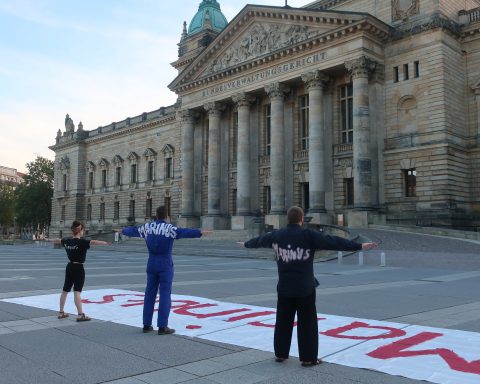
The end of May I was at a conference in Belfast, the capital of Northern Ireland. Upon arrival I was surprised to find out that Belfast used to be a glorious port city where the Titanic was built. But what stood out on my very short sightseeing list was its Botanic Gardens with their beautiful Palm House and the murals. Since my free time was limited, I was efficiency itself. Before leaving the airport I asked for a tourist map and the charming older lady behind the red Tourist Information desk generously marked out the route for my walk.
The Belfast Botanic Gardens is located in Southern Belfast near Queens University – our conference site – so I found the Palm House in no time. It is graceful and radiant, even on a grey and rainy day. It seems about to take off in the air, although it is made of cast iron. In fact it is one of the earliest examples of curvilinear cast iron glasshouses in the world, built in 1840. Enchanted, I took a trillion photos, paying tribute also to its curves.

I was just a bit surprised by a beauty-spoiling sign plastered inside on some of its windows saying “Breast-feeding Welcome Here” but did not give it much thought. Only later – from a conference speaker – did I find out that public breast-feeding is extremely controversial in Belfast. It makes the news. For example, on Apr 5, 2012 “The Public Health Agency (PHA) . . . commended a number of Northern Ireland businesses that have signed up to a scheme to make breast-feeding in public easier. Over 300 organisations and businesses have now joined the ‘Breast-feeding Welcome Here’ scheme.
I then continued on the bus towards the murals. And, being Efficiency itself, I reached into my bag for the map showing my way. My bag stared back at me sternly. I had forgotten the map. So I turned to a nice older man sitting behind me to ask for directions. He said this that and the other and before I knew it I was following in his footsteps which ended in a small office somewhere in Belfast. I had no idea where I was.
Only my daughter can fully appreciate the predicament in which I found myself. When we travel together, I drive her crazy by always but always consulting the map. He said “Give her the works” to a younger man. Who did just that. At some point the rain was so heavy that my smartphone fogged and refused to take any further pictures. I even offered my umbrella to my guide, although my hood was insufficient and I badly needed it myself. But he said “No need. We are used to it”. Were it not for his stoicism and generosity, I would have been long gone.
Instead I tried to follow his explanations the best I could. After a while it dawned on me that I was on the Loyalist territory inhabited by those Irish who wanted Ireland and the Irish to stay with the British Crown. Some murals depicted British aristocrats or Irish heroes fighting alongside the British in battles that meant much to them and nothing to me. Others showed armed Loyalists in military postures.
The impromptu guide explained to me that what I am mostly seeing are completely new “positive” murals, painted over the old “negative” murals of the past. The old murals could still be seen in minature, usually to the left of the paint-ons.

The new murals covered entire sides of houses. One featured, for example, an assemblage of quilts created by a group of women from the neighbourhood. Another showed young people coming of age. A piece of art symbolised the spirit of reconciliation. Next to it a text pledged to remember the violent past (civil wars between the Protestants and Catholics transfigured into the conflict about whether or not Northern Ireland should remain British) but to respect the other (Catholics) and renounce any violence in the future.

The guide kept repeating how important it was to build up civil society in a post-conflict area, imbue people with hope and let women and the young be in on the conversation about self-determination.
“No future without us” was a motto. “You have to keep the conversation going” was the mantra.
I felt deep disquiet. Art should not just be painted over. And: in almost every direction I looked, I could see new houses. Small (as often in the UK) and neat. Perhaps a tiny bit too well-planned and all beige. I guessed and had it confirmed that new art went along with the new housing. This was then an embodiment of what I believed: in a society ripped up by violent conflicts but moving towards reconciliation, if you want to set up Truth Commissions, fine, but do not forget to give bread, housing and education to the victims.
But I was disturbed by the “talk” about “the need to keep the conversation going” and the paint-overs. The paint-overs said to me that a small group of people tried to impose its will on a large group of people. Not by completely silencing and erasing their memories and their view of things, but by reducing these to manageable miniatures and “asides”.

But perhaps I was wrong. The last mural I saw, entitled “Gold Rush”, depicted a story of a golden treasure found by chance during a demolition of an old house. Did it capture what this was all about? A dream that a golden future could be built by demolishing the painful, violence-ridden house of the past?
The last thing my guide showed me was the skyscraper from whose top floors the British used to monitor the area. Whether truth or myth, does not matter: they could see and identify everybody (with their eyes!) in the adjacent neighborhoods, ready to shoot to kill.
Here at the latest, his sense of victimhood came through. A very long depressing wall divides his Belfast from the Belfast of the Irish fighting for independence: “From now on, you are on your own. Over there I cannot be of any help.” His own bitterness expressed in just one sentence:
“Tourist busses never come over here!”
A narrow bleak road cut out in the wall connects the two communities. A petrifying heavy metal gate locked every day at 8 pm still divides them. “We are living on dynamite” were his last words of farewell.
Just before one reaches the gate, on the left hand side, there is a series of murals which show Polish and Irish soldiers fighting together during WWII. A text and a series of lifesize pictures depict the
biography of a Northern / loyalist Irish hero who made it big in the British military and then went to Israel “for love”. In fact, he moved there to teach the Israelis military and – as a colleague claimed – anti-terrorist arts, adding fuel to the fire of anti-imperialist, anti-Israeli “freedom fighters” whose murals start not far away on the other side of the petrifying metal door. The love story came much later (“We Salute You”).

Their murals depict their own and distant liberation fighters; their slogans and their symbols. Anything between Nicaragua and South Africa`s Mandela. The text on Mandela`s mural says: “In my country we go to prison first and then become President”.
I turn the corner and see fewer “propaganda” and “solidarity” murals in bright colors and instead more brown and black murals from everyday life: Irish protests against the British domination, Black Taxis bought on the other side, but to be run on this side to counter debilitating British-made cuts in bus service, two women – one for revealing and one for concealing the truth about the Ballymurphy Massacre.
I now turn to the right, down the street (Falls Road) leading to the heart of the neighborhood. After a while I see a tasteful mural of a handsome Irish hero – Bobby Sands – the most photographed mural of Belfast. The text says he was a poet, Gaeilgedir (I skip over this puzzle) Revolutionary and IRA Volunteer. He was a Republican who apparently said: “Our revenge will be the laughter of our children.”

I continue down the road and see some more, but it is neither easy to spot them nor to know where to turn. I buy a little pocket guide to murals. In it I see a big mural which I did not find interesting or aesthetically pleasing enough to photograph after I crossed the gate (The 1981 Hunger Strike).
It is only now I understand its great significance. It shows the participants of two successive prison hunger strikes (1980 and 1981), taking to these desperate means to protest against unbearable prison conditions and to gain recognition as political prisoners. The text blames the British Government for the death toll it took.
My pocket guide also tells me that Bobby Sands – the one of the most photographed mural that I just saw – died after 66 days of that Hunger Strike. So he was a poet, an IRA volunteer and a martyr. The first one to die in the prison that year.
I am advised to wander into the streets to see some more murals. So I do and become saddened. For now murals are not just about heroes and martyrs. A mural I try to decipher next shows faces encased in what transpires as plastic bullets that, along with their predecessor, the rubber bullets, were in use since 1970. They killed and, much more often, maimed. The youngest victim was 10 years old, the bullet larger than his hands. The mural was painted in protest against their use.
Sometimes murals are grouped, sometimes I have to walk quite a bit into the streets off the main road to find them. The “worst” were the small, unexpected photographs or tablets commemorating accidental victims of terrorist attacks. They speak a private language of sorrow and of grief that refuses to go away.
On the last day of my stay I decide to take a tourist bus. I have enough time before I have to go to the airport. The bus happens to start at my hotel and takes us almost immediately to the mural area which commemorates the Republicans, such as Bobby Sands, fighting for independence from the British. In a sunlit colorful neighborhood, we see large murals to the left and right, spread in-between beer parlors and restaurants catering to tourists. We make a detour and see a wall on the Loyalist side fighting to stay with the British – the part to which I was “kidnapped”.
This part seemed too far away from the gate to which my guide took me, but in fact it features kilometers of murals. So we see the Loyalist murals, but, indeed, as my guide said, we do not enter the neighborhood doing the work of re-painting the past. Then we reach and move along the murals I saw after I crossed the gate that depict the Irish protest, Black Taxis, the women for and against the truth… I am sure nobody can see any details at all. To take them in, one would have to get out. On this tour, nobody does. I suppose no amateurs of what has become known in the literature as “black tourism” on this day among us.
As for me: I started with completely false expectations of seeing some amazing murals and ended up in part disappointed about their artistic quality and in part learning tiny bits and pieces of Irish history.
I thought: a typical Westerner dreamed the Nicaraguan or South African liberation dream, but not the Irish.
It was not distant and exotic enough, so not on the map. I also found out how sad living in Belfast can be. Accidentally, by losing my map and having been “kidnapped” to the Loyalist side, I saw their community first.
I saw what most tourists do not see: that Loyalists see themselves as, and have been, victims. The British bullets from that dreadful skyscraper were also meant for them, just like the fraternal acts of terrorism. The “guided tour” made me realize that post-conflict, reconciliatory community development can be a mixed blessing if it is gained at the cost of having not only the threat of violence, but also having one`s suffering painted over.
The Republican neighborhoods on the other side of the gate do not see much new housing and I am not sure if it is needed. A huge modern hospital seems to supply employment there. The streets I walked looked relatively speaking prosperous to my naked eye, but nothing like the city center, of course.

The fact is on this side of the gate nobody paints the murals over. So the suffering on this side remains legitimate. And brings in tourists.
No historical plaque said that, but of course the question is to what extent the bitter, violent and, most importantly, prolonged conflict about Northern Ireland has contributed to Belfast`s demise. Today it tries to cheer up and to turn itself into a bright tourist attraction, but certainly the area I saw seems to exhaust itself in the very effort of trying.







